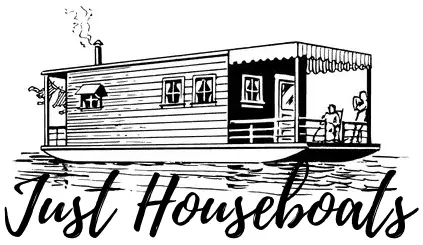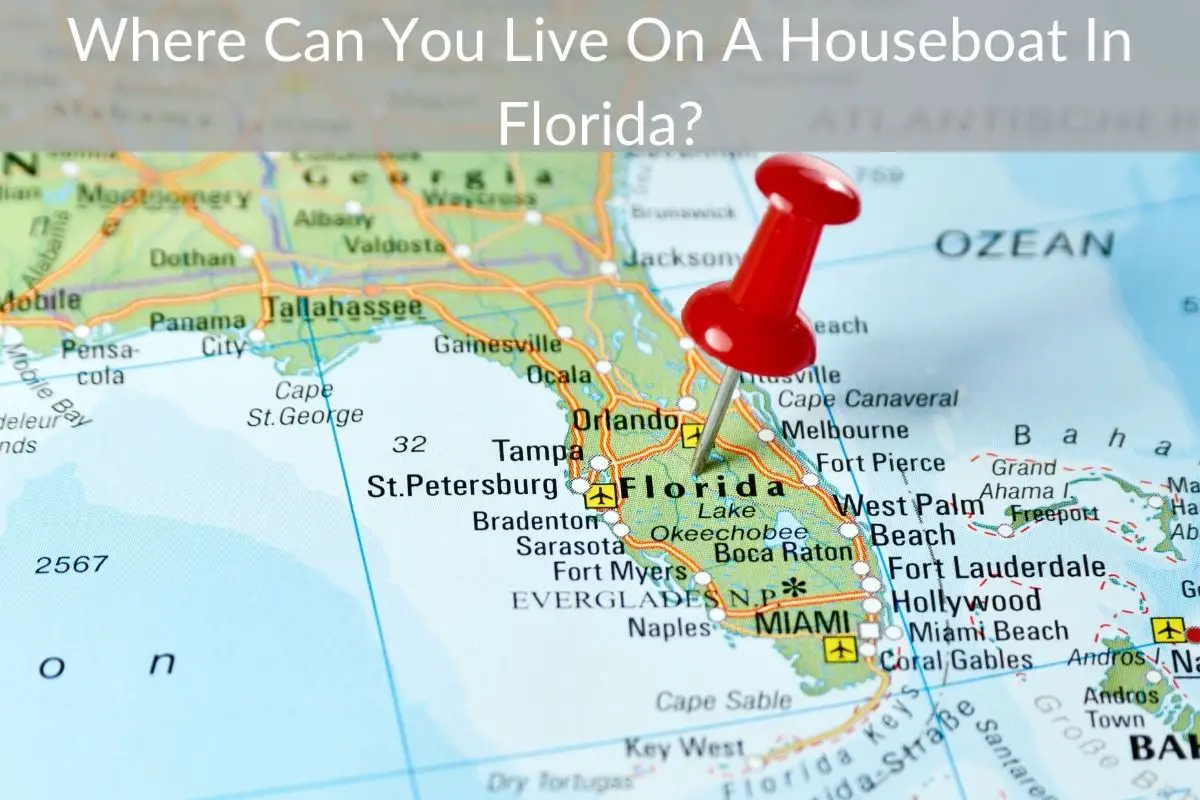If you are just looking into getting a houseboat or are just curious about houseboats one of the first questions that people have is how do houseboats get water. In this article I will do my best to answer that question.
*This post may contain affiliate links. As an Amazon Associate we earn from qualifying purchases.
Houseboats get water in a few basic ways. They are:
- Pumped on board
- Carried on board
- Water filtration system
I will cover each of those methods in the rest of this article.
Pumped On Board
This is the most obvious of the 3 and is the most common. When a houseboat is docked at a marina they will often have access to electrical and water hookups. It is at this time that you can fill the water tanks on your houseboat with fresh water.
Most houseboat fresh water tanks will be around the 100 gallon size but they can vary quite a bit by different manufactures. If you are planning on living on board it would be a good idea to upgrade your fresh water tank to hold additional water.
Most people won’t use more than 100 gallons in between dockings as you will also have to empty your sewage tanks as well so staying out indefinitely isn’t a good option for most people. When you dock to empty your sewage tanks you can also take on fresh water at that time.
Carried On Board
If you are beaches or anchored off shore and are running low on water you can certainly carry fresh water on board using refillable water containers such as that you would see at Walmart, Target, etc. Although those water containers will work in a pinch they are far from an ideal way to bring fresh water on board your boat.
The most common size for those water bottles is 5 gallons which means that to fill a 100 gallon tank you would need to carry 20 5 gallon bottles on board! At 42 pounds each (the weight of the water and bottle) you would have to move over 800 pounds every time you wanted to fill your tank!!!
You can certainly see why this should only be done in an emergency.
Water Filtration System
This is one of the best ways to get your fresh water as you don’t have to dock to do it (although you will still have to empty your septic tanks). There are many different water filtration systems on the market but you have to make sure that the one you choose will not only filter out dirt but also any viruses, bacteria, or other harmful things that may be in the lake or river water.
Life straw has released a water filtration system that is reasonably priced but it only filters 2-3 gallons per hour. That means it would take – little over 2 days to entirely fill your tank. The issue with this water filtration system and many others is that you have to replace the filters and that can be costly.
The Life Straw system can filter 4,755 gallons of water before the filter needs changed. If you have a 100 gallon water tank then you can refill it 47 times before the filter will need to be replaced. If you are living on board your houseboat with your family then you shouldn’t have to replace the filter but once every year or so. If it is just a couple of people on board it could last you multiple years before it needs replaced!
As reasonably priced as the Life Straw system is even if you never plan on needing to take water directly from the lake or river it isn’t a bad idea to have it on board to make sure you will always have clean water to drink!
There are of course other filtration systems that you can get on your boat but for most people spending tons of money on a filtration system just doesn’t make a whole lot of sense.
Whatever way you decide to get your water onto your houseboat always be sure to have enough on board for your entire trip. You certainly don’t want to head back to dock because you forgot to fill up with water!
Do Houseboats Have Running Water?
When you search for a houseboat, it is important to consider the various plumbing and freshwater systems. Having the right plumbing system will make your houseboating experience more pleasant. Read on to learn more about freshwater systems, garbage disposal, and more! You will also find out about the different types of power sources for the water system. A houseboat is a perfect place to go if you love the water, but if you’re concerned about power, you can use shore power.
Houseboats have their own water system
Most houseboats have their own water system. The capacity of the system depends on the amount of water used onboard, the number of outlets and the flow rate. Non-self-priming pumps need to be installed below the water line while self-priming pumps can be located above the water line. You should make sure you choose the right one for your boat. It will be beneficial to check the requirements of the water system before buying a houseboat.
The fresh water holding tanks of houseboats vary in size. The water supply is limited and you should always make sure you have enough to use the shower or sink without overfilling it. Also, you need to empty the gray and black water tanks regularly to prevent foul odors from developing. A full tank may also lead to a leak, which can cause an unsanitary mess. A houseboat with a freshwater tank needs to be emptied every few weeks.
In addition to the water systems, houseboats are also governed by laws. Local authorities control the navigation of tidal waters, while the Environment Agency is responsible for inland waterways. Navigation authorities also oversee Scottish and Northern Irish waters. There are different laws for houseboats. Listed below are some of the most common ones:
Like a houseboat, houseboats have their own sewage system. When the boat is docked at a marina, the sewage needs to be pumped out. Some marinas have boats that scoop sewage, but most require the houseboat owner to empty the tank himself. However, you may have to pay to have the sewage tanks emptied. Ensure that you have the proper plumbing system on board your houseboat.
There are various regulations for houseboats on Fontana Lake. You need to comply with the water pollution rules of the lakes before launching your boat on them. The water pollution prevention requirements require houseboat owners to display a compliance sticker and provide proof of a pumping contract to the local government. Private houseboat owners have also complied with water testing laws to make sure that they do not have any odors.
They are powered by shore power
Houseboats are powered by shore power to provide electricity to the vessel. Shore power is typically 120 volts at 30 amps, allowing them to generate 3.6 kilowatts of energy. Most shore outlets in the US and Caribbean are 50 amps, while European shore outlets are 16 amps at 240 volts, 50 Hertz. These shore outlets may not be compatible with US shore outlets, but the main difference is the voltage and frequency.
Most houseboats are powered by shore power, but not all of them. A lot of these boats are small, inexpensive outboards, or large cabin cruisers with full amenities. In recent years, houseboats have become more energy-efficient and powerful, so using shore power for your appliances is highly recommended. In order to get the most out of your boat’s shore power, be sure to buy the highest-quality appliances that you can afford.
While houseboats are powered by shore power, some houseboats are equipped with gas or diesel generators. The generators provide power for appliances, small electronics, and charging batteries. Because houseboats use a limited amount of electricity, it’s important to prioritize what needs to be run. Then, you can make smart decisions about what you need. If you can’t find shore power, you can use a generator.
Electrical systems in houseboats are regulated according to the National Electrical Code (NEC), NFPA 303, and ABYC. In order to prevent a faulty current, shore power should have a strong ground path to prevent the energizing of water. Additionally, shore power should be isolated from the boat’s internal AC system using isolation transformers. Lastly, it’s best to install electronic devices that detect low ground-fault currents.
Battery replacement is a crucial part of any boat. Each amp hour of energy that you use can deplete the batteries. If you’re going to leave the boat overnight, you should consider battery replacement methods. A high-output alternator on the main engine or solar panels can provide the energy to replace the batteries. But be sure not to run the main engine for long periods of time, as this can damage the engine and the batteries.
They have a hot tub
There are many advantages to a houseboat vacation. They are comfortable and spacious, and have running water and hot tubs. There is no need to worry about sleeping arrangements – a houseboat can sleep up to 16 people. Moreover, they are equipped with air conditioning, a second steering station, and hot tubs. All of these amenities are sure to make the stay on a houseboat memorable.
Before embarking on houseboat hot tub maintenance, be sure to refer to the owner’s manual. The manual will list which tools and sealants are needed for particular problems. Do not fall for the tempting offers of quick fixes that are too good to be true. Proper investments will yield better results. Just be wary of shoddy work that doesn’t guarantee success. Listed below are some essential tips for taking care of the hot tub on a houseboat.
Houseboats have a separate water tank for hot water. The hot tub is typically filled to the fullest capacity and takes 4 hours to heat. The instructor will go over this system at the orientation so that guests can make sure it is working properly. You can also opt for a houseboat rental with a discount, which can range from $200 to 10%. For example, you may be able to enjoy a hot tub and water slides at the same time.
Houseboats have everything you need for the ultimate vacation. These luxurious, fully-equipped houseboats have everything you need for an unforgettable experience. They have everything you need for a comfortable stay – beds, bathrooms, showers, kitchen, entertainment center, full-size gas grill, hot tub, and more. If you would like to take a walk on the shoreline trails, you can anchor your houseboat to a nearby shoreline.
They have a garbage disposal system
Running water and a garbage disposal system are common amenities on houseboats. They allow for flushing toilets and are reminiscent of home toilets. On some houseboats, waste is kept in a holding tank until the boat reaches a pumping station. Otherwise, a medium-sized waste bin can be used for food cans, plastic packages, and water bottles. Once filled, waste bins should be stored in an airtight compartment to prevent unpleasant odors.
A houseboat with a garbage disposal system is equipped with a separate sewage tank, or holding tank. There are two types of heads for houseboats: manual and electric. Manual heads use a pump handle to flush. The trash disposal system offers several options for disposing of waste on board cruisers. Some systems can treat the waste before it reaches the sewage system, while others burn the ash to create ash that is safe for disposal.
Freshwater and wastewater disposal systems are also available on houseboats. Freshwater is delivered to the houseboat via a pressurized system, similar to that in a house on land. The water is routed through a hot water heater and an electric pump. Both grey and black water are stored in separate tanks. Depending on the type of houseboat, the sewage disposal system may be self-emptying or dockside pump-out.
The sewage treatment systems on houseboats are very efficient. Some even have garbage disposal systems and can discharge treated sewage outside the limits, which depend on the destination. A tertiary sewage treatment system is available for a nominal price. Once the treatment is complete, the waste is pumped into specially-designed trucks for disposal. In the meantime, houseboats with a garbage disposal system are safer to use than those without one.
Some boat owners have two separate holding tanks. One is used for gray water, and the other for black. It depends on the disposal system and location where the boat is moored. If the boat is on fresh water, black water should be emptied into the sea. Unless the boat is docked, black water should be emptied into the water. Then the gray water can be emptied.https://www.youtube.com/embed/Y3BA-O0dNH0
